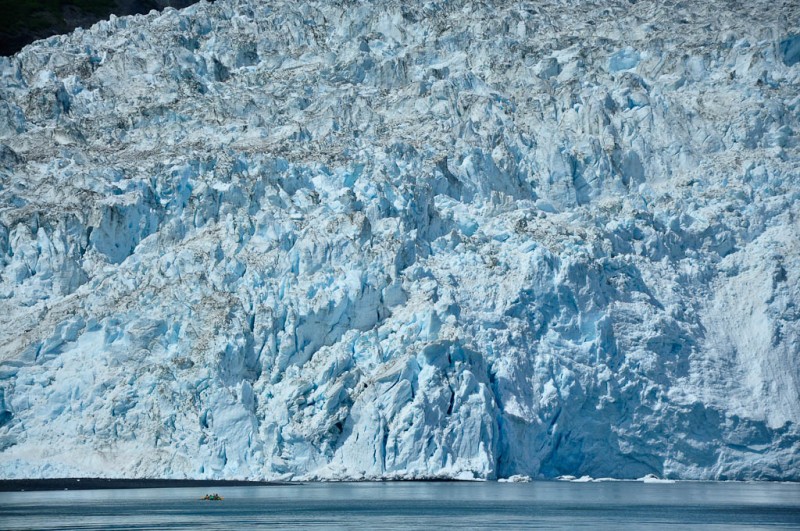 above: Aialik Glacier with a tiny kayaker in the foreground
above: Aialik Glacier with a tiny kayaker in the foreground
When Dall DeWeese went to the Kenai Peninsula in 1887 to hunt wild game for sport, he realized the uniqueness and vulnerability of the area. His letter to Theodore Roosevelt in 1901 was the first plea for it’s preservation:
“This is a subject that appeals to every ‘true-blue sportsman,’ every lover of animal life, and all those who see beauty in nature, embracing forests, plains, and mountains throughout our entire country, and while the woods, plains, and mountains are naturally beautiful, we all agree that they are much more grand and lifelike when the wild animals and birds are present. There are now several organizations doing work toward the preservation of wild animal and bird life. There is much yet for us to do; to resolve is to act. Let us be up and at it.”
The area was designated a Moose Range in 1941 which protected some wildlife. But, it’s designation in 1980 as a National Park/National Wildlife Refuge made the preservation of the area all encompassing.
The Harding Ice Field which is 35 miles long and 20 miles wide is a prominent feature of the Park. It covers 52% of the park area and gives rise to at least 38 glaciers. The Aialik Glacier is one of them and our destination during the Kenai Fjord boat tour.
The Aialik Glacier is a Tidewater Glacier meaning it terminates in the sea and this is where my interest comes in. I have seen glaciers, hiked glaciers and even slept on a glacier (very cold night) but, I have never seen one calving into the sea. I have seen footage on TV of the tremendous hunks of ice breaking off and splashing into the water but, I wanted to see this for myself.
We got great views of the Bear and Holgate Glaciers on our way to the Aialik but to pull up in front of this massive hunk of ice was overwhelming. It was difficult to get an idea of scale unless there was another boat nearby. The waterfront of the Glacier extends approximately 1 mile with it’s height approximately 300 feet.
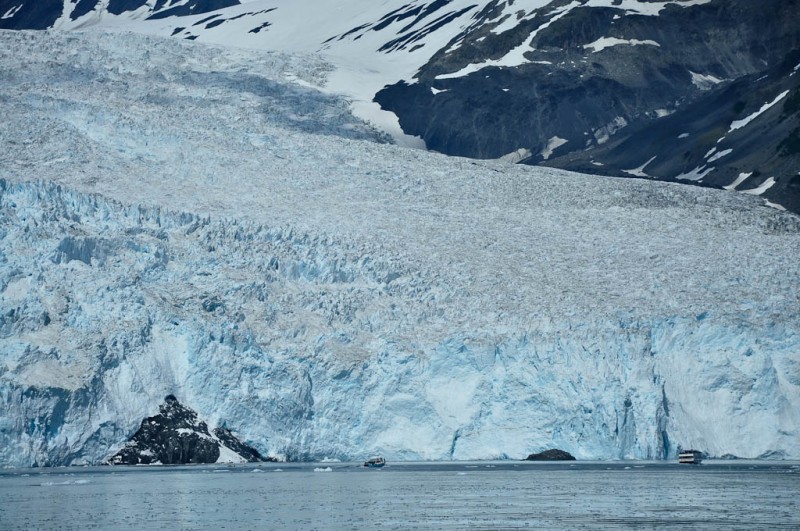 above: Note the “tiny ships” in the foreground.
above: Note the “tiny ships” in the foreground.
The captain didn’t need to tell anyone to be quiet as there was dead silence at our approach. You really could hear the proverbial pin drop as everyone just stood silently in awe. With the silence, you could hear the creaking and cracking of the ice and we all panned our vision across it’s breadth hoping to catch a piece calving into the water. Unfortunately, by the time you could actually hear the tremendous crashing sound and turn to see it, the event is already over. Sometimes you could catch “little” pieces pour off like sugar out of a measuring cup but it was difficult to predict where the next big piece might fall.
The Captain pulled the boat up to within 1/4 of a mile and I saw a section that looked to be separating with “sugar” pieces flowing out from around the edges. I decided that I would ignore the rest of the glacier and focus my camera on that section. My patience paid off. Suddenly, the whole column that seemed to be separating earlier peeled off and fell straight into the sea with thunderous crash. I had the camera set on automatic advance and held my finger down.
Of course, it probably would have been better to have a video camera to record the event but even then nothing compares to actually being there, feeling the chill of the ice, hearing the creaking and crashing and seeing the building size pieces fall.
One of the crew members fished out a piece of glacier ice by the boat and gave it to the Dudes to hold. They were truly delighted at the opportunity, that is, until their hands became numb.
To experience the scenery and the wildlife and to witness an ancient hunk of ice terminating its existence into the sea was a truly satisfying one and one that will stay with us forever.
“Forests, lakes, and rivers, clouds and winds, stars and flowers, stupendous glaciers and crystal snowflakes – every form of animate or inanimate existence, leaves its impress upon the soul of man. ” Orison Swett Marden


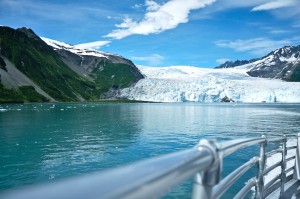

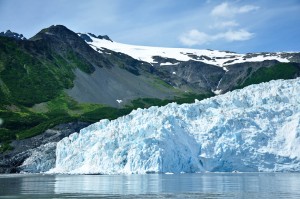
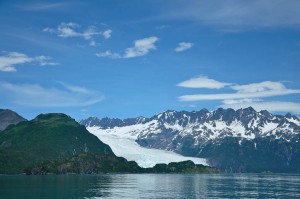
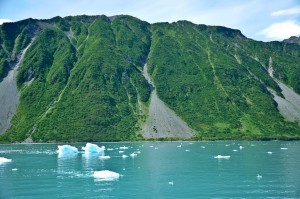
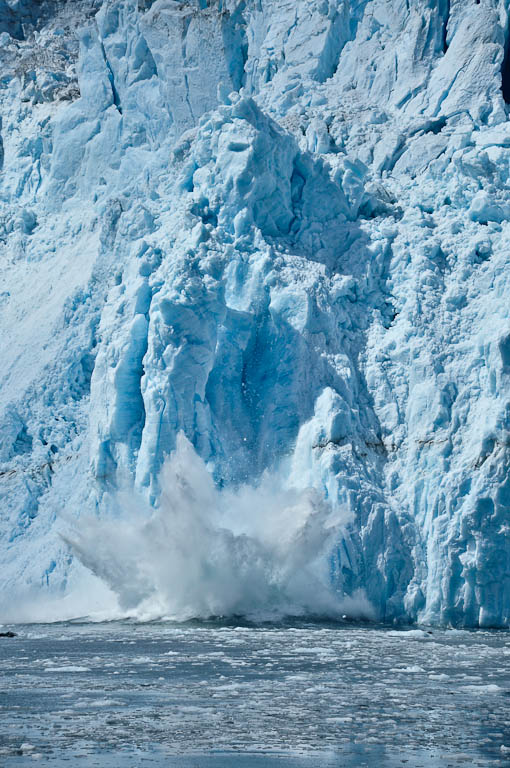
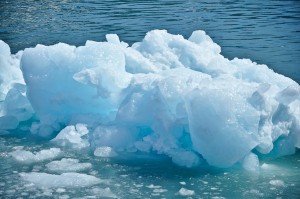

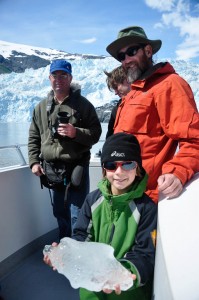
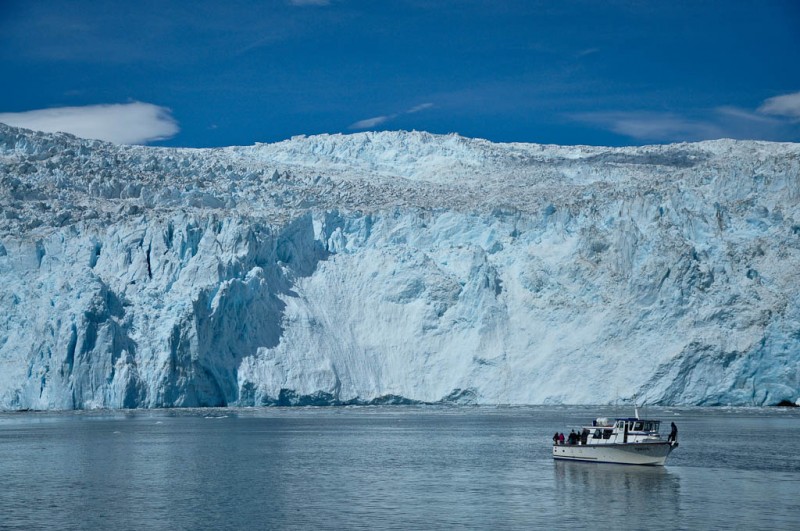
12 Responses to Kenai Fjord Tour – Aialik Glacier